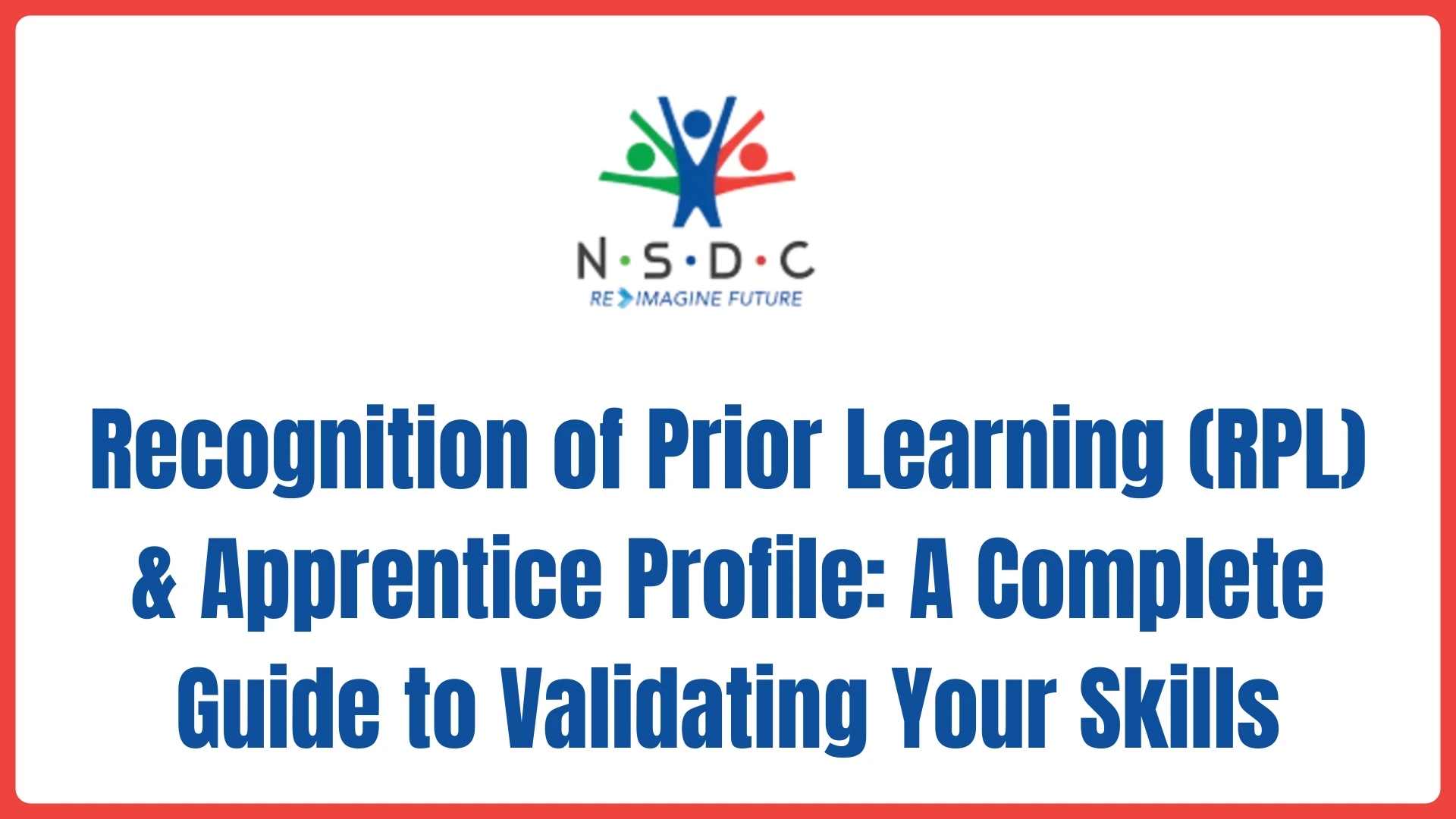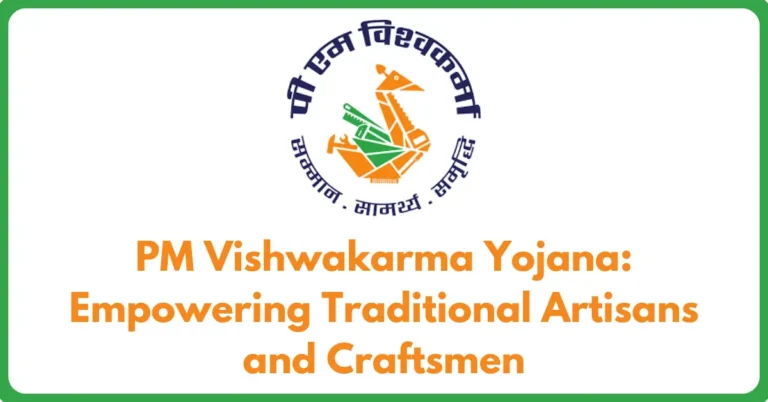Recognition of Prior Learning (RPL) & Apprentice Profile: A Complete Guide to Validating Your Skills
Introduction: Bridging the Gap Between Experience and Certification
Millions of skilled workers in India possess invaluable expertise gained through years of hands-on experience, yet they lack a formal certificate to validate their knowledge. This gap often limits their career growth, earning potential, and mobility. The Recognition of Prior Learning (RPL) program, a key component of India’s Skill India Mission, is designed to bridge this very gap. RPL is a process of assessing and certifying an individual’s existing skills, knowledge, and experience against prescribed standards, regardless of how and where they were acquired.
Closely integrated with this is the national apprentice profile ecosystem, managed through portals like the Apprentice Registration Portal and RDAT (Registration of Database of Affiliated Training Providers). This system is crucial for those seeking structured, learn-and-earn opportunities through apprenticeships.
This definitive pillar page serves as your one-stop resource to understand and navigate both RPL and the apprentice registration landscape. We will demystify the RPL process, from eligibility to certification, and provide a clear, step-by-step guide to creating your apprentice profile, obtaining your apprentice registration number, and understanding RDAT registration. Whether you’re a seasoned worker looking for formal recognition or a newcomer seeking apprenticeship opportunities, this guide will equip you with the knowledge to take the next step in your career.
1. What is Recognition of Prior Learning (RPL)? Definition and Core Principles
Recognition of Prior Learning (RPL) is a systematic process of identifying, assessing, and certifying a person’s skills, knowledge, and experience gained through formal, non-formal, or informal learning against established standards for a specific qualification.
The core principles of RPL are:
- Inclusivity: It acknowledges that valuable learning happens beyond formal classrooms—on the job, through self-study, volunteering, and life experiences.
- Standardization: Skills are assessed against National Occupational Standards (NOS) and Qualification Packs (QPs) defined by Sector Skill Councils (SSCs), ensuring national recognition and consistency.
- Accessibility: It provides a pathway for workers in the unorganized sector, homemakers, and experienced professionals to gain a government-approved certificate without undergoing lengthy training programs.
- Empowerment: RPL empowers individuals by formally recognizing their capabilities, thereby boosting their confidence and formal employability.
RPL is a cornerstone of the Pradhan Mantri Kaushal Vikas Yojana (PMKVY), aiming to certify millions of experienced workers across India.
2. Why RPL Matters: Benefits for Individuals, Industry, and the Economy
The impact of RPL is multi-dimensional, offering significant advantages to various stakeholders.
For Individuals:
- Formal Certification: Obtain a government-recognized certificate (NSQF aligned) that validates years of experience.
- Career Advancement: Enhances opportunities for promotions, higher wages, and mobility within and across organizations.
- Increased Mobility: The certificate is portable and recognized nationally, making it easier to find employment in different regions.
- Access to Further Education: Provides a pathway to pursue higher education or additional qualifications.
- Enhanced Dignity and Confidence: Formal recognition of skills boosts self-esteem and professional identity.
For Industry and Employers:
- Identifies Skilled Workforce: Helps in identifying and recruiting genuinely skilled workers, reducing the cost and time spent on training.
- Improves Productivity: A certified workforce is often more productive and maintains higher quality standards.
- Standardizes Skills: Ensures that all workers meet a nationally recognized standard of competency.
- Employee Retention: Investing in employee certification through RPL can increase job satisfaction and loyalty.
For the Economy:
- Formalizes the Workforce: Brings a large segment of the unorganized sector into the formal skilled workforce.
- Addresses Skills Gap: Directly mitigates the skill shortage by recognizing existing skills.
- Promotes Lifelong Learning: Encourages a culture of continuous skill development and certification.
3. The RPL Process: A Step-by-Step Journey to Certification
The journey to RPL certification is streamlined and candidate-friendly:
- Identification: A candidate is identified by a Training Partner (TP) or can self-identify for an RPL program in their field of expertise (e.g., masonry, tailoring, welding, domestic electrician).
- Counselling: The candidate is counselled about the RPL process, its benefits, and what to expect.
- Registration: The candidate’s details are registered on the designated skill development portal by the TP.
- Pre-Screening: A basic assessment is conducted to gauge the candidate’s current competency level.
- Bridge Training (Optional): Based on the pre-screening, candidates may undergo short-term bridge training to address any specific skill gaps aligned with the NOS. This is not a full course but a targeted intervention.
- Final Assessment: The candidate undergoes a formal assessment conducted by an independent assessment agency. The assessment is practical and demonstrates the candidate’s ability to perform the required tasks.
- Certification: Upon successful assessment, the candidate is awarded an RPL certificate. This certificate is equally valuable as one obtained through fresh training and is often accompanied by a monetary reward under PMKVY.
4. The Apprentice Ecosystem: Understanding Apprentice Registration and Profiles
While RPL recognizes existing skills, the apprenticeship system focuses on building new skills through structured training.
4.1. What is an Apprentice Profile and Apprentice ID?
An Apprentice Profile is a digital profile created on the National Apprenticeship Promotion Scheme (NAPS) portal or other government portals. It contains all the essential details of an apprentice, including personal information, educational qualifications, and details of the apprenticeship.
- Apprentice Registration Number / Apprentice ID: This is a unique identification number assigned to an individual upon successful registration apprentice on the portal. This apprentice ID is used to track the apprentice’s progress, stipend payments, and certification throughout the apprenticeship tenure.
- Purpose: The profile serves as a single point of record for all apprenticeship-related activities, making the management of the diploma apprentice training registration and other programs efficient and transparent.
4.2. The Role of RDAT Registration for Training Providers
RDAT Registration stands for Registration of Database of Affiliated Training Providers. It is a process managed by the Directorate General of Training (DGT) for ITIs and other vocational training providers.
- Objective: To create a centralized database of all government and private ITIs and training institutes that are affiliated with the DGT.
- Process: Institutes must complete the RDAT registration form to be recognized as official training providers. This registration is mandatory for them to offer government-affiliated courses and apprenticeships.
- Importance for Candidates: When a candidate chooses an institute that has completed RDAT registration, they ensure the legitimacy of the training provider and the validity of the certification they will receive.
5. A Step-by-Step Guide to Apprentice Portal Registration
For individuals seeking apprenticeship opportunities, here is how to get started:
- Visit the Portal: Go to the official National Apprenticeship Promotion Scheme (NAPS) portal (www.apprenticeshipindia.gov.in).
- Candidate Registration: Click on the “Candidate Registration” or “apprentice registration portal” link.
- Fill in Details: Enter your personal details, including your name, date of birth, Aadhaar number, email, and mobile number. You will also need to provide your educational qualifications.
- Create Login Credentials: Set up a username and password for your account.
- Verify Mobile and Email: Complete the verification process using the OTPs sent to your mobile and email.
- Access Your Dashboard: Once logged in, you will be able to access your personal dashboard—your trainee profile.
- Locate Your ID: Your unique apprentice registration number (Apprentice ID) will be generated and displayed on your profile.
- Search and Apply: Use the portal to search for available apprenticeship opportunities posted by companies and apply directly through your profile.
6. RPL vs. Fresh Skilling: Choosing the Right Path for You
| Feature | Recognition of Prior Learning (RPL) | Fresh Skilling (e.g., PMKVY, ITI) |
|---|---|---|
| Target Audience | Experienced workers with existing skills (1+ years) | New entrants, freshers, career changers with no prior experience |
| Process | Assessment and certification of existing skills | Training from scratch followed by assessment |
| Duration | Short (a few days for assessment and optional bridge training) | Longer (3 months to 2 years) |
| Focus | Validating and certifying what you already know | Teaching new skills and knowledge |
| Ideal For | Getting formal recognition for informal experience | Entering a new field or trade altogether |
7. Conclusion: Unlocking Your Potential with Formal Recognition
The Recognition of Prior Learning (RPL) program and the structured apprentice profile system are transformative initiatives that empower the Indian workforce. RPL honors the skills you’ve tirelessly developed over the years, granting them the formal recognition they deserve and opening doors to new opportunities. Simultaneously, the apprenticeship ecosystem provides a structured pathway for the next generation to build in-demand skills.
By understanding these systems and taking proactive steps—whether by pursuing RPL certification or completing your apprentice registration—you are not just validating your skills; you are investing in your future, enhancing your employability, and contributing to the vision of a Skilled India. Take the first step today to unlock your full potential.







